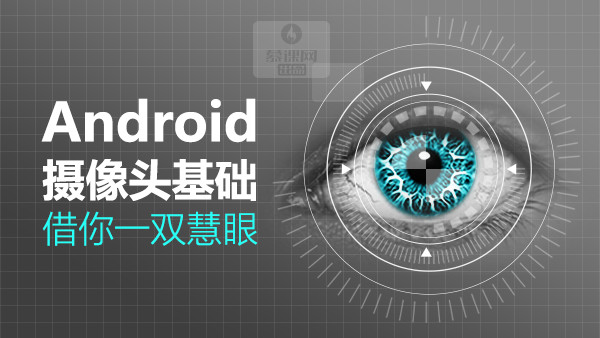先回顾下之前的
【Android架构】基于MVP模式的Retrofit2+RXjava封装(一)
【Android架构】基于MVP模式的Retrofit2+RXjava封装之文件下载(二)
【Android架构】基于MVP模式的Retrofit2+RXjava封装之文件上传(三)
今天要说的是使用Retrofit2和Okhttp 过程中遇到的一些问题。
1.上传数组
相信很多人都遇到到这个问题,这里说下笔者的2种方案:
方案一 把整个请求体转换为JSON提交
首先是ApiServer
@POST("api/goods/send") Observable<BaseModel> sendGoods(@Body RequestBody requestBody);Presenter
String[] str = new String["123","234"];
HashMap<String, Object> map = new HashMap<>();
map.put("province", addressModel.getProvince());
map.put("city", addressModel.getCity());
map.put("area", addressModel.getArea());
map.put("zipcode", addressModel.getZipcode());
map.put("user_goods_ids", str);
RequestBody requestBody = RequestBody.create(MediaType.parse("application/json; charset=utf-8"), new Gson().toJson(map));
mPresenter.sendGoods(requestBody);方案二 模拟数组
首先是ApiServer
//商品评论(私有接口)
@POST("PrivateApi/goods/goodsComment") @FormUrlEncoded
Observable<BaseModel> goodsComment(@FieldMap ArrayMap<String, Object> map);Presenter
ArrayMap<String, Object> map = new ArrayMap<>();
map.put("goods_id", goods_id);
map.put("content", etElaluate.getText().toString().trim());
map.put("address", address); for (int i = 0; i < data.size(); i++) {
map.put("img[" + i + "]", data.get(i));
}
presenter.goodsComment(map);2.Cookie 持续化存储
说道这里,不得不说,Okhttp还是强大
client = new OkHttpClient.Builder() .cookieJar(new CookiesManager(MyApplication.getContext())) .connectTimeout(10, TimeUnit.SECONDS) .readTimeout(10, TimeUnit.SECONDS)// .sslSocketFactory() .build();
创建OkHttpClient时,可以传递一个实现了CookieJar 的自定义管理cookie类,只需要重写其saveFromResponse(HttpUrl url, List<Cookie> cookies)和loadForRequest(HttpUrl url)方法。
这2个方法的作用也很明显,一个是保存cookie,一个是获取cookie
public class CookiesManager implements CookieJar { private final PersistentCookieStore cookieStore; public CookiesManager(Context context) {
cookieStore = new PersistentCookieStore(context);
} @Override
public void saveFromResponse(HttpUrl url, List<Cookie> cookies) { if (cookies.size() > 0) { for (Cookie item : cookies) {
cookieStore.add(url, item);
}
}
} @Override
public List<Cookie> loadForRequest(HttpUrl url) {
List<Cookie> cookies = cookieStore.get(url); return cookies;
}
}PersistentCookieStore
public class PersistentCookieStore { private static final String LOG_TAG = "PersistentCookieStore"; public static final String COOKIE_PREFS = "Cookies_Prefs"; private final Map<String, ConcurrentHashMap<String, Cookie>> cookies; private final SharedPreferences cookiePrefs; public PersistentCookieStore(Context context) {
cookiePrefs = context.getSharedPreferences(COOKIE_PREFS, 0);
cookies = new ArrayMap<>(); //将持久化的cookies缓存到内存中 即map cookies
Map<String, ?> prefsMap = cookiePrefs.getAll(); for (Map.Entry<String, ?> entry : prefsMap.entrySet()) {
String[] cookieNames = TextUtils.split((String) entry.getValue(), ","); for (String name : cookieNames) {
String encodedCookie = cookiePrefs.getString(name, null); if (encodedCookie != null) {
Cookie decodedCookie = decodeCookie(encodedCookie); if (decodedCookie != null) { if (!cookies.containsKey(entry.getKey())) {
cookies.put(entry.getKey(), new ConcurrentHashMap<String, Cookie>());
}
cookies.get(entry.getKey()).put(name, decodedCookie);
}
}
}
}
} protected String getCookieToken(Cookie cookie) { return cookie.name() + "@" + cookie.domain();
} public void add(HttpUrl url, Cookie cookie) {
String name = getCookieToken(cookie); //将cookies缓存到内存中 如果缓存过期 就重置此cookie
if (!cookie.persistent()) { if (!cookies.containsKey(url.host())) {
cookies.put(url.host(), new ConcurrentHashMap<String, Cookie>());
}
cookies.get(url.host()).put(name, cookie);
} else { if (cookies.containsKey(url.host())) {
cookies.get(url.host()).remove(name);
}
} //讲cookies持久化到本地
SharedPreferences.Editor prefsWriter = cookiePrefs.edit();
prefsWriter.putString(url.host(), TextUtils.join(",", cookies.get(url.host()).keySet()));
prefsWriter.putString(name, encodeCookie(new SerializableOkHttpCookies(cookie)));
prefsWriter.apply();
} public List<Cookie> get(HttpUrl url) {
ArrayList<Cookie> ret = new ArrayList<>(); if (cookies.containsKey(url.host()))
ret.addAll(cookies.get(url.host()).values()); return ret;
} public boolean removeAll() {
SharedPreferences.Editor prefsWriter = cookiePrefs.edit();
prefsWriter.clear();
prefsWriter.apply();
cookies.clear(); return true;
} public boolean remove(HttpUrl url, Cookie cookie) {
String name = getCookieToken(cookie); if (cookies.containsKey(url.host()) && cookies.get(url.host()).containsKey(name)) {
cookies.get(url.host()).remove(name);
SharedPreferences.Editor prefsWriter = cookiePrefs.edit(); if (cookiePrefs.contains(name)) {
prefsWriter.remove(name);
}
prefsWriter.putString(url.host(), TextUtils.join(",", cookies.get(url.host()).keySet()));
prefsWriter.apply(); return true;
} else { return false;
}
} public List<Cookie> getCookies() {
ArrayList<Cookie> ret = new ArrayList<>(); for (String key : cookies.keySet())
ret.addAll(cookies.get(key).values()); return ret;
} /**
* cookies 序列化成 string
*
* @param cookie 要序列化的cookie
* @return 序列化之后的string
*/
protected String encodeCookie(SerializableOkHttpCookies cookie) { if (cookie == null) return null;
ByteArrayOutputStream os = new ByteArrayOutputStream(); try {
ObjectOutputStream outputStream = new ObjectOutputStream(os);
outputStream.writeObject(cookie);
} catch (IOException e) {
Log.d(LOG_TAG, "IOException in encodeCookie", e); return null;
} return byteArrayToHexString(os.toByteArray());
} /**
* 将字符串反序列化成cookies
*
* @param cookieString cookies string
* @return cookie object
*/
protected Cookie decodeCookie(String cookieString) { byte[] bytes = hexStringToByteArray(cookieString);
ByteArrayInputStream byteArrayInputStream = new ByteArrayInputStream(bytes);
Cookie cookie = null; try {
ObjectInputStream objectInputStream = new ObjectInputStream(byteArrayInputStream);
cookie = ((SerializableOkHttpCookies) objectInputStream.readObject()).getCookies();
} catch (IOException e) {
Log.d(LOG_TAG, "IOException in decodeCookie", e);
} catch (ClassNotFoundException e) {
Log.d(LOG_TAG, "ClassNotFoundException in decodeCookie", e);
} return cookie;
} /**
* 二进制数组转十六进制字符串
*
* @param bytes byte array to be converted
* @return string containing hex values
*/
protected String byteArrayToHexString(byte[] bytes) {
StringBuilder sb = new StringBuilder(bytes.length * 2); for (byte element : bytes) { int v = element & 0xff; if (v < 16) {
sb.append('0');
}
sb.append(Integer.toHexString(v));
} return sb.toString().toUpperCase(Locale.US);
} /**
* 十六进制字符串转二进制数组
*
* @param hexString string of hex-encoded values
* @return decoded byte array
*/
protected byte[] hexStringToByteArray(String hexString) { int len = hexString.length(); byte[] data = new byte[len / 2]; for (int i = 0; i < len; i += 2) {
data[i / 2] = (byte) ((Character.digit(hexString.charAt(i), 16) << 4) + Character.digit(hexString.charAt(i + 1), 16));
} return data;
}
}SerializableOkHttpCookies
public class SerializableOkHttpCookies implements Serializable { private transient final Cookie cookies; private transient Cookie clientCookies; public SerializableOkHttpCookies(Cookie cookies) { this.cookies = cookies;
} public Cookie getCookies() {
Cookie bestCookies = cookies; if (clientCookies != null) {
bestCookies = clientCookies;
} return bestCookies;
} private void writeObject(ObjectOutputStream out) throws IOException {
out.writeObject(cookies.name());
out.writeObject(cookies.value());
out.writeLong(cookies.expiresAt());
out.writeObject(cookies.domain());
out.writeObject(cookies.path());
out.writeBoolean(cookies.secure());
out.writeBoolean(cookies.httpOnly());
out.writeBoolean(cookies.hostOnly());
out.writeBoolean(cookies.persistent());
} private void readObject(ObjectInputStream in) throws IOException, ClassNotFoundException {
String name = (String) in.readObject();
String value = (String) in.readObject(); long expiresAt = in.readLong();
String domain = (String) in.readObject();
String path = (String) in.readObject(); boolean secure = in.readBoolean(); boolean httpOnly = in.readBoolean(); boolean hostOnly = in.readBoolean(); boolean persistent = in.readBoolean();
Cookie.Builder builder = new Cookie.Builder();
builder = builder.name(name);
builder = builder.value(value);
builder = builder.expiresAt(expiresAt);
builder = hostOnly ? builder.hostOnlyDomain(domain) : builder.domain(domain);
builder = builder.path(path);
builder = secure ? builder.secure() : builder;
builder = httpOnly ? builder.httpOnly() : builder;
clientCookies =builder.build();
}
}此方法可供参考,也可以用其他方式实现,比如说ACache。
3.添加统一请求头
跟cookie一样,okhttp中已经实现
在创建OkHttpClient时,可以添加自定义的拦截器
client = new OkHttpClient.Builder() //添加log拦截器 .addInterceptor(headInterceptor) .addInterceptor(interceptor) .connectTimeout(10, TimeUnit.SECONDS) .readTimeout(10, TimeUnit.SECONDS)// .sslSocketFactory() .build();
private Interceptor headInterceptor = new Interceptor() { @Override
public Response intercept(Chain chain) throws IOException {
Request request = chain.request();
Request.Builder builder = request.newBuilder().addHeader("LEDAYOUXUAN", "159357456")
.addHeader("APP_TOKEN", UserImpl.getAppToken()); return chain.proceed(builder.build());
}
};还有一种特别坑的情况,统一请求参数需要添加到请求body中
处理方式还是在拦截器中,不过要区分get和post,注意post无参的情况
private Interceptor headInterceptor = new Interceptor() { @Override
public Response intercept(Chain chain) throws IOException {
Request request = chain.request(); //获取到方法
String method = request.method(); if (method.equals("GET")) {
HttpUrl httpUrlurl = request.url();
String url = httpUrlurl.toString(); int index = url.indexOf("?"); if (index > 0) {
url = url + "&APP_KEY=" + AppConstant.APP_KEY;
} else {
url = url + "?APP_KEY=" + AppConstant.APP_KEY; //拼接新的url
}
request = request.newBuilder().url(url).build(); //重新构建请求
} else if (method.equals("POST")) {
Request.Builder requestBuilder = request.newBuilder(); //请求体定制:统一添加token参数
if (request.body().contentLength() == 0) { //没有参数
FormBody.Builder newFormBody = new FormBody.Builder();
newFormBody.add("APP_KEY", AppConstant.APP_KEY);
newFormBody.add("APP_TOKEN", UserImpl.getAppToken());
newFormBody.add("version", AppUtils.getVersionName(MyApplication.getInstance()));
requestBuilder.method(request.method(), newFormBody.build());
} else if (request.body() instanceof FormBody) { //正常post
FormBody.Builder newFormBody = new FormBody.Builder();
FormBody oidFormBody = (FormBody) request.body(); for (int i = 0; i < oidFormBody.size(); i++) {
newFormBody.addEncoded(oidFormBody.encodedName(i), oidFormBody.encodedValue(i));
}
newFormBody.add("APP_KEY", AppConstant.APP_KEY);
newFormBody.add("APP_TOKEN", UserImpl.getAppToken());
newFormBody.add("version", AppUtils.getVersionName(MyApplication.getInstance()));
requestBuilder.method(request.method(), newFormBody.build());
}
request = requestBuilder.build();
} return chain.proceed(request);
}
};PS:当请求使用 @Multipart注解时,这里还有点问题,目前我的处理方式是在这些方法中手动添加需要的公共参数,有已经实现的小伙伴可以告诉我。
这里会引申出一个问题,原生与h5混合开发时,h5也需要cookie的处理,这会在下篇博客中涉及到。
4.POST无参数
正常post 需要添加@FormUrlEncoded 注解,当post 无参时,只需要去掉该注解即可。
@POST("PrivateApi/Users/verifySecond")Observable<BaseModel> verifySecond();

 随时随地看视频
随时随地看视频




